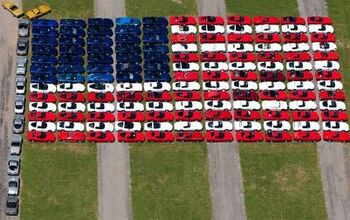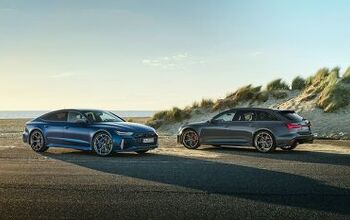The Truth About "America's" Small Car Comeback
With new compact and subcompact models from Ford and GM enjoying respectable sales, the mainstream media has been indulging in some “feel-good” headlines, like the New York Times’s Detroit’s Rebound Is Built on Smaller Cars, or CBS’s more equivocal Can small cars rebound U.S. auto industry? It’s an understandable instinct, as the media has long battered Detroit’s inability to build competitive compact and subcompact cars, and in the post-bailout atmosphere of redemption, these headlines definitely help reassure Americans about the value of their “investment.” Unfortunately (if unsurprisingly), however, these pieces gloss over the full truth of the situation. Yes, Ford and GM are enjoying improved sales success with small cars. The “U.S. auto industry,” on the other hand, isn’t actually getting all that much out of the situation, beyond some fluffily positive press. Here’s why:
Final assembly, as many know, is just one way in which to measure the impact of a given car on the thousands of firms that make up the U.S. auto industry. Some cars which the MSM are highlighting as perception changers for “Detroit” and “the US auto industry,” like the Ford Fiesta (or the Cadillac SRX compact crossover), are not built in the US at all. But even those that do are hardly any more American than strong-selling nameplates that have been built in America for years. To understand how this can be, it’s important to understand “content mix,” or the percentage of US/Canadian origin in each vehicle. Luckily Car & Driver publicized 2010’s NAFTA-area domestic content mix by model, in a PDF that you can download here.
What that data shows is that most of the cars that are being most closely associated with the “American Small Car Rebound” are not, well, all that American. Fiesta and Chevrolet’s Cruze are perhaps the most widely-referenced “perception-changing” Detroit small car, and yet both are average or worse when it comes to US/Canadian content mix for their segment. A Honda Civic made in Indiana, for example, uses considerably more North American-sourced parts than either the Cruze or its even-more-lauded Volt platform-mate. Nissan’s Mexican-made Versa has more North American parts content than any other NAFTA-made subcompact. In short, the Detroit firms may be selling more domestically-branded small cars, but they’re hardly breaking new ground in terms of selling high-domestic-content compact and subcompact cars… yet.
The good news is that this situation should improve in some cases. GM’s 2% North American Aveo will be replaced later this year by the Sonic, a 65% NA content subcompact, built in Michigan. Ford’s new 2012 Focus appears to keep its high domestic parts content mix, apparently improving over its predecessor by one percent for a segment-leading 85% North American content. On the other hand, Dodge is getting a new Fiat-based replacement for Caliber soon, and a relatively rapid homologation could mean much lower domestic content there.
In any case, though Ford and GM’s sales numbers show improvement in the small car arena, America still has a long way to go before it’s a small car manufacturing hub. Furthermore, the improvements in Ford and GM’s small car sales still aren’t having as much of an impact on the “real US auto industry,” the thousands of parts suppliers and related firms across the US, as the mainstream media’s narrative implies. And the most-hyped cars, in particular, still don’t match the North American parts content mixes that transplants have been achieving for some time.
More by Edward Niedermeyer
Latest Car Reviews
Read moreLatest Product Reviews
Read moreRecent Comments
- Carson D It will work out exactly the way it did the last time that the UAW organized VW's US manufacturing operations.
- Carson D A friend of mine bought a Cayenne GTS last week. I was amazed how small the back seat is. Did I expect it to offer limousine comfort like a Honda CR-V? I guess not. That it is far more confining and uncomfortable than any 4-door Civic made in the past 18 years was surprising. It reminded me of another friend's Mercedes-Benz CLS550 from a dozen years ago. It seems like a big car, but really it was a 2+2 with the utilitarian appearance of a 4-door sedan. The Cayenne is just an even more utilitarian looking 2+2. I suppose the back seat is bigger than the one in the Porsche my mother drove 30 years ago. The Cayenne's luggage bay is huge, but Porsche's GTs rarely had problems there either.
- Stanley Steamer Oh well, I liked the Legacy. It didn't help that they ruined it's unique style after 2020. It was a classy looking sedan up to that point.
- Jalop1991 https://notthebee.com/article/these-people-wore-stop-signs-to-prank-self-driving-cars-and-this-is-a-trend-i-could-totally-get-behindFull self stopping.
- Lou_BC Summit Racing was wise to pull the parts. It damages their reputation. I've used Summit Racing for Jeep parts that I could not find elsewhere.

































Comments
Join the conversation
"General Motors plans more miles per gallon, more features for 2012 Chevrolet Cruze" By Robert Schoenberger in The Plain Dealer on Tuesday, May 17, 2011 http://www.cleveland.com/business/index.ssf/2011/05/general_motors_plans_more_mile.html CLEVELAND, Ohio -- With its hot-selling Chevrolet Cruze quickly becoming the most expensive, least fuel efficient compact car on the market, General Motors is planning big upgrades for the car this summer. Last month, the Lordstown-built Cruze was GM's No. 1 car. It passed Toyota's Corolla to become the No. 2 compact car in the country behind Honda's Civic. Since then, Honda has begun selling its 2012 Civic and Ford dealers have been offering the 2012 Focus. At the same time, Hyundai has been increasing production of its 2011 Elantra. All three offer lower prices and more miles per gallon than the Cruze. In response, GM boosted fuel economy in most versions of the 2012 Cruze, a car that should be on sale this summer. Order guides for dealers show the upcoming model should get 38 miles per gallon on the highway, two more than the old model and a figure that matches the new Focus. Most versions of the Honda will get 39 mpg, while the Elantra gets 40. * * * The increases to fuel efficiency for the Cruze are in all versions of the car with automatic transmissions and the 1.4-liter turbocharged engine. The Cruze Eco, a version of the car that gets 42 mpg highway, uses a manual transmission, so GM does not expect its ratings to change. Also staying unchanged is the Cruze LS, the base model version of the car that uses a 1.8-liter engine mated to a manual transmission. Also for 2012, GM will begin offering its mid-range LT and LT2 Cruze models with manual transmissions. Again, the company has not released pricing on the new model, but offering the manual could knock as much as $900 off of mid-range versions of the car.
It would be interesting to see this sales weighted. For instance, how much of the Cobalt was US content and does the sales volume of the Cruze make up the difference? Same for the Focus. Might have to look at if the Civic and Corolla lost sales (pre tsunami numbers), how much domestic production was lost because of this?